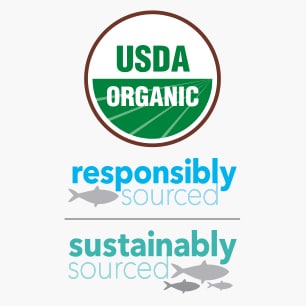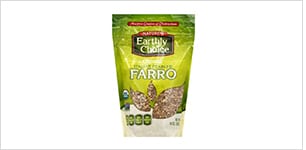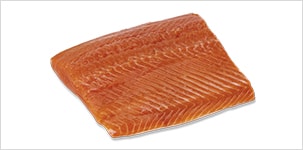As you shop to support your health goals, you may notice a multitude of callouts on packaged products addressing their nutrition and how they are produced. While the FDA and USDA regulate some health claims that appear on labels, other claims are simply advertising. Deciphering these claims—and the laws and regulations that govern them—can be confusing. Our registered dietitian nutritionists can help you understand claims and what they mean for you.

What’s in a Claim?
Product claims may be regulated, third-party certified, undefined, or company-specific. Let’s navigate some of the most common callouts you may encounter.
Meat, Poultry, and Eggs
The way animals are raised in the food production process is important to many customers. Here are some terms related to meat and poultry:1
No added hormones: The USDA prohibits the use of hormones in all poultry. When no added hormones appears on poultry packaging, it must be followed by the statement Federal regulations prohibit the use of hormones. For beef and pork, a no added hormones claim means that the producer chose not to use any hormones.
No antibiotics: A no antibiotics claim may appear on meat or poultry labels only if manufacturers provide sufficient documentation to the USDA demonstrating that the animals were raised without antibiotics.
Vegetarian fed: This claim means the meat or poultry received an all-vegetarian feed without animal products or by-products. Please note that young mammals drink their mothers’ milk; after being weaned, they are fed all-vegetarian diets.
If you’re looking for meat and poultry fed a 100% vegetarian diet and raised without antibiotics or added hormones,* check out our GreenWise meats. Try GreenWise flank steaks in our new Marinated Steaks with Kiwi Relish over Farro recipe.
Grass-fed: Grass-fed meat and meat products are generally understood to be those derived from cattle that consume only grass. However, because there is no official federal definition of grass-fed, check the label carefully. Some grass-fed producers, for example, may feed some grain, while others have a third-party certification or claim that the product is 100% grass-fed.2 Please note that calves drink mothers’ milk.
Be on the lookout! Grass-finished is not the same as grass-fed, because animals that are grass-finished may be fed grain.3
Cage-free: This label indicates that the flock can roam a building, room, or enclosed area with unlimited access to food and fresh water during their production cycle.2, 4
Free range: For chickens and eggs, free range means that the flock has access to the outdoors. For beef, pork, and other meats, the supplier must provide documentation as well as define what they mean by the claim. For example, with beef, a company may choose to define free range as having never been confined to a feedlot, which must be noted on the packaging.1
Seafood
There are plenty of choices at our Seafood counter, including wild-caught and farm-raised options. Many customers want to know the origins of seafood and how seafood sourcing impacts our oceans. We make it easy to learn about sustainable seafood practices, helping you and your family make informed decisions about the fish you choose to eat. Be sure to look for our sustainably or responsibly sourced icons.
Sustainably sourced (wild caught): When you see our sustainably sourced icon with wild-caught seafood, it means that item has either been evaluated by the Sustainable Fisheries Partnership (SFP) and is considered “well-managed” in accordance with their guidelines, or it has an approved ecolabel as established by the Global Sustainable Seafood Initiative (GSSI).
Sustainably sourced (farm raised): With farmed seafood, the sustainably sourced icon identifies an item that has an approved ecolabel as established by GSSI’s standard for sustainable sourcing.
Responsibly sourced (wild caught): When you see our responsibly sourced icon with wild-caught seafood, it means that item has been evaluated by the SFP and is either considered “managed” in accordance with their guidelines or is from a fishery participating in a fishery improvement project that is credible and graded.
Responsibly sourced (farm raised): With farmed seafood, the responsibly sourced icon identifies an item that has an approved ecolabel as established by GSSI’s standard for responsible sourcing.
Learn more about your seafood choices and how they may impact your health.
Keep your eyes peeled! Our wild sockeye salmon, which is sustainably sourced, is in season in July. Enjoy it in our Spiced Salmon with Mango Salsa and Cauliflower “Rice” recipe.
Nutrition
Healthy, low-carb, fat free, no added sugar, and other nutritional claims may lead you to believe that a product is better for you than others. Check out our guide to what these claims mean, which ones are regulated, and how to avoid nutrition tricks.
Claims Related to Eating Styles
Be sure you understand the meaning behind product claims related to specific diets or eating styles.
Vegetarian: In general, vegetarians do not eat meat, fish, or poultry.
Vegan: In addition to being vegetarian, vegans typically do not consume animal products and by-products such as eggs, dairy items, and honey.5
Plant-based: Plant-based or plant-forward eating patterns focus on foods derived from plants—including fruits, vegetables, nuts, seeds, oils, whole grains, legumes, and beans. This doesn’t have to mean entirely cutting out meat and dairy from your diet; it’s about choosing more foods from plant sources.6 Plant-based foods are on trend, with new options appearing in every category. Take a look at our ideas for plant-based eating and its potential health benefits.
Important to note! There is no federal definition of the words vegetarian, vegan, or plant-based in the US. Several nonprofit organizations in North America and Europe have developed third-party certifications and icons for use on packaged foods. Along with these groups, many private companies have developed icons for their own food. It’s important to look for the meaning of each certification, since they may differ greatly from one company to another.7
Genetically Modified and Bioengineered Foods
A genetically modified organism (GMO) is a plant, animal, or microorganism with altered genetic material or DNA. Some customers have concerns about consuming genetically modified foods, and many manufacturers include non-GMO and GMO-free claims on their products.8 Despite ubiquitous non-GMO labeling, there are actually a limited number of GMO crops grown and sold in the US.9
Bioengineered (BE) foods are GMOs. It’s important to note, however, that not all GMOs are BE. Many genetically modified products, such as highly refined oils, do not have BE labeling.
In order to ensure that labeling on genetically modified foods is consistent, the USDA’s National Bioengineered Food Disclosure Standard defines bioengineered foods as those containing detectable genetic material that has been modified through certain lab techniques and cannot be created through conventional breeding or found in nature. For each of these foods, manufacturers must include the BE symbol, words, or other disclosure on packaging by January 1, 2022.
The Agricultural Marketing Service developed a List of Bioengineered Foods to identify the crops or foods that are available in a bioengineered form, including alfalfa, apple (Arctic varieties), canola, corn, cotton, eggplant,† papaya,† pineapple (pink flesh), potato, salmon (AquAdvantage®), soybean, summer squash, and sugar beet.9
Keep in mind! If you want to avoid genetically modified or bioengineered foods, consider purchasing organic—the USDA National Organic Program prohibits the use of genetic engineering and GMOs.
Organic
Organic is a USDA-defined labeling term that relates to the way foods are produced. National organic standards forbid the use of most synthetic fertilizers and pesticides, sewage sludge, irradiation, and genetic engineering to grow fruits, nuts, vegetables, and grains. Organic meat and poultry must not be irradiated. The animals must have access to the outdoors, and they cannot be given any growth hormones, antibiotics, or other drugs. All feed must be 100% organic, with no animal by-products.10
Quick tip! Look for our easy-to-spot USDA Organic and Made with at Least 70% Organic Ingredients icons across the store to quickly identify foods that meet these standards.
Kosher
If you’re maintaining a kosher diet, check the labels of packaged foods for kosher certification—the stamp of approval by a rabbinic agency verifying they have checked the product’s ingredients, production facility, and actual production to ensure that all ingredients, derivatives, tools, and machinery have no trace of nonkosher substances.11
We make it easy for you with kosher sections in most of our stores. Be sure to try our kosher-adaptable recipes, which can be made kosher with minimal changes that maintain the separation of meat and dairy (for example, replacing butter with margarine).
For the Love of You
Choosing how you eat is uniquely personal. It’s about your needs, your preferences, and your goals. As your wellness ally, we’re in your corner with fresh ideas, recipes, and wellness icons that make it easier to shift toward wiser food choices. It’s all about you, at your very best.
*Federal regulations prohibit the use of hormones in poultry.
†Certain varieties.
Sources
1 United States Department of Agriculture (USDA). Meat and Poultry Labeling Terms. Food Safety and Inspection Service. August 10, 2015.
2 United States Department of Agriculture (USDA). Food Safety and Inspection Service Labeling Guideline on Documentation Needed to Substantiate Animal Raising Claims for Label Submissions. Food Safety and Inspection Service. December 2019.
3 Grass-Finished vs. Grain-Finished Beef. Cattlemen's Beef Board and National Cattlemen's Beef Association. Accessed May 14, 2020.
4 United States Department of Agriculture (USDA). Questions and Answers – USDA Shell Egg Grading Service. Agricultural Marketing Service. October 2015.
5 Veganism in a Nutshell: What is a Vegan? The Vegetarian Resource Group. Accessed May 14, 2020.
6 McManus, Katherine D., MS, RD, LDN. What Is a Plant-Based Diet and Why Should You Try It? Harvard Health Publishing. September 26, 2018.
7 Yacoubou, Jeanne, MS. Vegetarian Certifications on Food Labels: What Do They Mean? The Vegetarian Resource Group. February 16, 2018.
8 Agricultural Biotechnology. United States Food & Drug Administration (FDA). Accessed May 14, 2020.
9 United States Department of Agriculture (USDA). BE Disclosure. Agricultural Marketing Service. Accessed May 14, 2020.
10 United States Department of Agriculture (USDA). Labeling Organic Products. Agricultural Marketing Service. Accessed May 14, 2020.
11 Orthodox Union. What Is Kosher Certification? OU Kosher. Accessed May 14, 2020.

 You are about to leave publix.com and enter the Instacart site that they operate and control. Publix’s delivery and curbside pickup item prices are higher than item prices in physical store locations. Prices are based on data collected in store and are subject to delays and errors. Fees, tips & taxes may apply. Subject to terms & availability. Publix Liquors orders cannot be combined with grocery delivery. Drink Responsibly. Be 21. For prescription delivery, log in to your pharmacy account by using the Publix Pharmacy app or visiting
You are about to leave publix.com and enter the Instacart site that they operate and control. Publix’s delivery and curbside pickup item prices are higher than item prices in physical store locations. Prices are based on data collected in store and are subject to delays and errors. Fees, tips & taxes may apply. Subject to terms & availability. Publix Liquors orders cannot be combined with grocery delivery. Drink Responsibly. Be 21. For prescription delivery, log in to your pharmacy account by using the Publix Pharmacy app or visiting 


